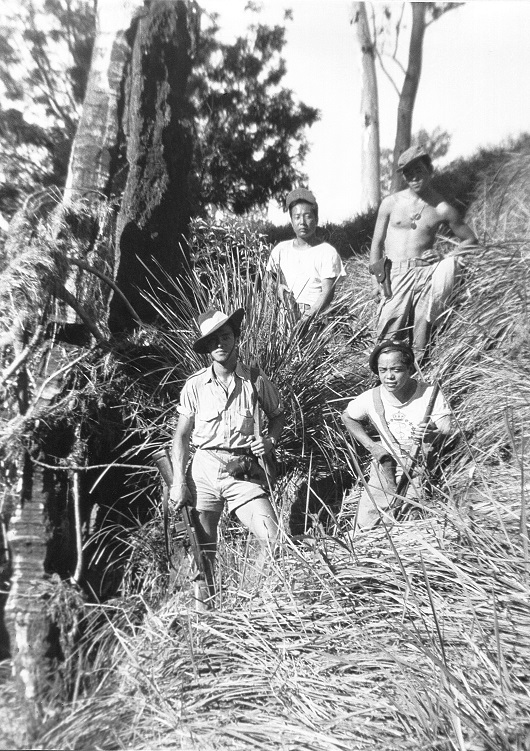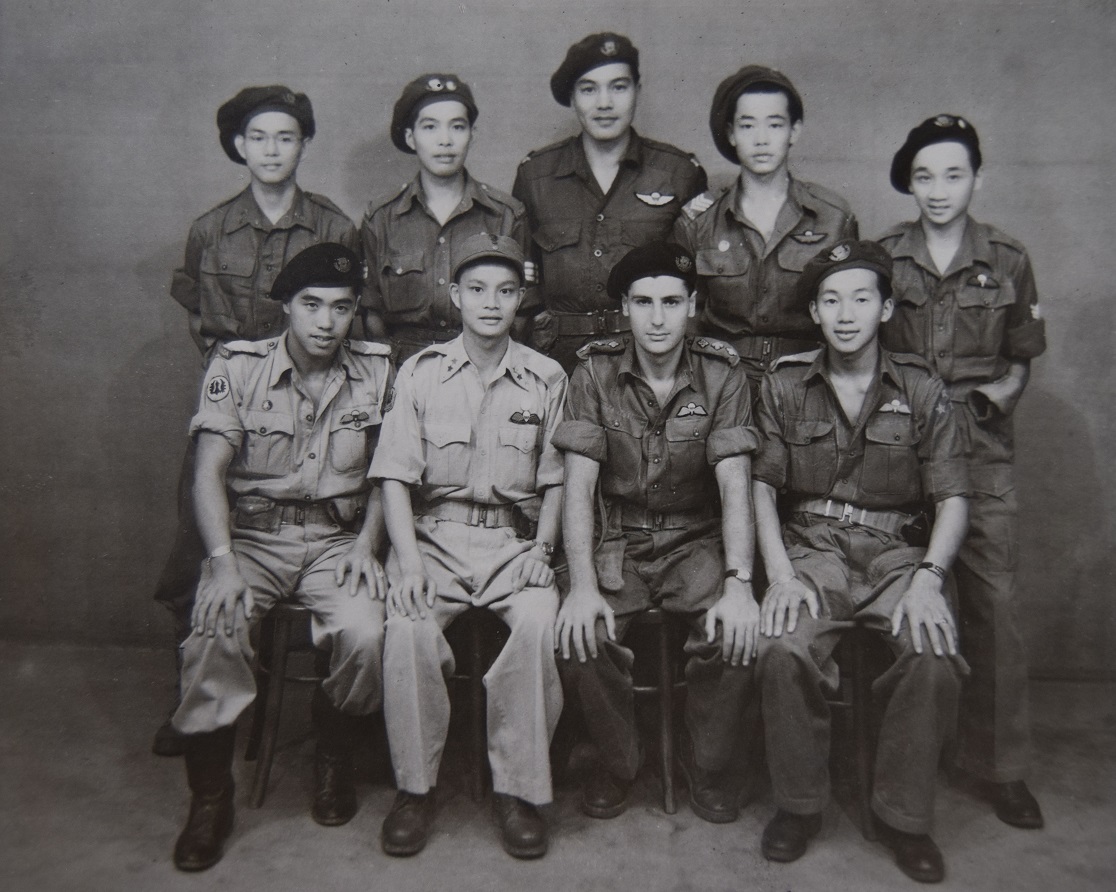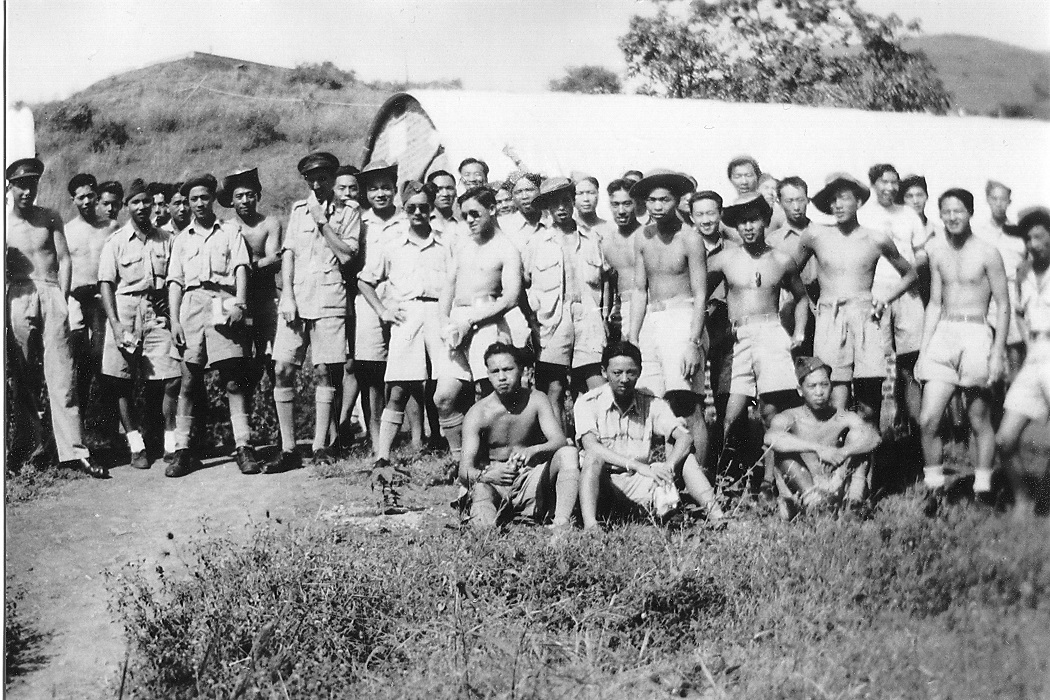Force 136 was a branch of the British Special Operations Executive (SOE) during the Second World War. Its covert missions were based in Japanese-occupied Southeast Asia, where orders were to support and train local resistance movements to sabotage Japanese supply lines and equipment. While Force 136 recruited mostly Southeast Asians, it also recruited about 150 Chinese Canadians. It was thought that Chinese Canadians would blend in with local populations and speak local languages. Earlier in the war, many of these men had volunteered their services to Canada but were either turned away or recruited and sidelined. Force 136 became an opportunity for Chinese Canadian men to demonstrate their courage and skills and especially their loyalty to Canada.

Background
In late 1941, Japan entered the Second World War and quickly invaded and occupied large areas of Southeast Asia, including several Dutch and British colonies (see Canada and the Battle of Hong Kong). Britain was desperate to regain control of its Southeast Asian colonies.
To that point in the war, the British intelligence organization Special Operations Executive (SOE) had successfully trained and dropped secret agents into Nazi occupied countries such as France, Belgium and Holland. The role of these agents was to organize and support local resistance fighters, help with espionage and sabotage German infrastructure, supply lines and equipment.
The British wanted to deploy agents in Southeast Asia to carry out similar objectives; however, the region presented a unique challenge. Many of the locals that the British wanted to train and support as guerrillas resented and distrusted their European colonizers.
Chinese Canadian Recruits
SOE went looking for a new kind of spy and found Chinese Canadians to be ready and willing to join the war effort. About 600 Chinese Canadians volunteered to fight for their country during the Second World War, but they were either not accepted to certain branches of the service or were recruited but never called to active duty. In British Columbia in particular, most Chinese Canadians, including men born in Canada, were rejected by local recruitment officers due to their race (see Anti-Asian Racism).
What’s more, these men volunteered to fight despite their status as second-class citizens. At the time, Chinese Canadians were denied the right to vote and to practise in such professions as law and medicine, among other restrictions. While some hesitated to join the war because of their status, others saw military service as an opportunity to fight for their right to full citizenship.
Some of us realized that unless we volunteered to serve Canada during this hour of need, we would be in a very difficult position after the war ended to demand our rights as Canadian citizens because the Canadian government would say to us, ‘What did you do during the war when everybody else was out fighting for Canada? What did you do?’ So a few of us volunteered to serve, and my group was probably the first to join up.
— Douglas Jung
Chinese Canadians were perfect recruits. They could easily blend in among local populations and they could speak English and Cantonese, a language commonly spoken across Southeast Asia.
These recruits were sworn to secrecy and warned that, if caught by the Japanese, they would not be viewed as ordinary soldiers: they would be deemed a spy and most certainly killed. Regardless, about 150 Chinese Canadians agreed to join.

I was interviewed by a British colonel, asked if I would like to volunteer for service behind the enemy lines in Malaya because I looked Chinese. And I was supposed to be able to speak Chinese. They needed people like me over there because they already exhausted all their manpower for people to jump in the lines in Malaya, to fight against the Japanese. So they finally decide to recruit some Chinese from Vancouver. (Herbert Lim served as a wireless operator with SOE Force 136. Click here for his interview with The Memory Project.)
Recruitment and Training
The SOE recruited Chinese Canadians to Force 136 in stages. The first group included 13 men who were hand-picked for a mission code-named Operation Oblivion. Initially, the plan was to send these men into Japanese-occupied China, where they would train resistance fighters.
In some ways, this first group of men were viewed as a test to determine whether Chinese Canadians could become commandos. They were brought to a secluded spot on Okanagan Lake (now known as Commando Bay), where they were trained in interpretation (Cantonese), silent killing, wireless operation, demolition, stalking, and rolling out of moving vehicles.
The men were then sent to Australia, where they were taught stalking (or tailing), how to lose a tail, parachuting, knowledge of the Japanese military and weapons, surveillance, silent swimming with a 50-lb pack, and how to survive in the jungle off insects and plants.
The biggest challenge for Chinese Canadians was the requirement to swim long distances in absolute silence while carrying a 50-lb. pack. At the time, Chinese people were banned from most public pools in British Columbia, where most recruits were from, and few knew how to swim.

Did you know?
Douglas Jung of Victoria, BC, was one of 13 Chinese Canadians selected for Operation Oblivion. Jung was injured during a parachute exercise during training and remained in Australia as an intelligence instructor. He became a lawyer after the war and entered politics in the 1950s. On 10 June 1957, Jung was elected as the first Chinese Canadian member of Parliament.
The mission of Force 136 was to travel by submarine to China, move in behind Japanese lines, survive in small teams with no outside support, seek out and train local resistance fighters — who they would help to sabotage Japanese equipment and supply lines — and conduct espionage.
However, Operation Oblivion was cancelled after Allied High Command decided that operations in the Pacific theatre north of New Guinea would be controlled by American forces.
By January 1945, more Chinese Canadians had been recruited. Most were sent to India, while a smaller group that included men from Operation Oblivion was stationed in Australia.

Field Operations
The conditions in the jungles of Southeast Asia made life miserable. Men had to suffer through malaria, dysentery and broken bones. They were forced to endure incredible heat, humidity and monsoon rains. They fought off insects and snakes of every kind. And once deep in the jungle, they experienced how difficult it was to find their way out. “You can [have] a hard time find your way out of a jungle. The direction…. Everywhere looked the same, you know,” remembered Charles Q. Lee of Vancouver.
When Japan officially surrendered in August 1945, most Chinese Canadian members of Force 136 had not been deployed on a mission. Some had been assigned short trips into occupied territory lasting a few days. Neill Chan of Vancouver described one of these short missions, which was, nevertheless, nerve-wracking:
I was travelling in a Jeep on the Burma Road…. As we drove, I saw bodies alongside the road. They had been decapitated. I wasn’t nervous at the start of that Jeep ride. But boy, by the end of that trip, I was very scared.
About 14 Chinese Canadians from Force 136 operated for several months in Burma, Borneo, Malaya and Singapore. They served on missions code-named Operation Galvanic, Operation Humour, Operation Tideway Green, Operation Snooper and Operation Sergeant.
Henry Fung, who specialized as an interpreter during his training, parachuted just outside of Japanese-occupied Kuala Lumpur, Malaya, on 22 June 1945. He and his team disabled telephone lines and blew up a railway bridge and tracks. They also joined forces with the Malayan Peoples’ Anti-Japanese Army. After Japan surrendered, Fung’s team took control of the city of Kajang until Indian Army troops, and some British, arrived.

Another group was headed by Captain Roger Cheng, an electrical engineer and the first Chinese Canadian officer in the Royal Canadian Corps of Signals. Roy Chan, Louey King, Norman Low and Jimmy Shiu served with Cheng. They were dropped into Borneo to make contact with Dyak indigenous peoples who lived deep in the jungle. Louey King recalled: “While in the jungles of Borneo we lived on crocodile meat, monkeys and wild pig. It was incredibly hot and steamy there: often over 45°C. I was shot in the leg in a skirmish.”
In August 1945, Captain Cheng’s group joined a British team gathering information about Japanese troops and prisoner-of-war camps. The Americans dropped the atomic bomb on Hiroshima the day after the men arrived in Borneo. Cheng and his men helped transfer AlliedPOWs to Australia after Japan surrendered and came up against Japanese units that refused to surrender.
Several Chinese Canadians stayed in Southeast Asia well into the fall of 1945. They assisted with liberating prisoner-of-war camps. They also helped prevent revenge massacres and maintain order and security during the chaotic post-surrender environment.

After the War
Fortunately, all Chinese Canadians in Force 136 survived their time in the jungle and returned home to Canada. Some experienced ongoing health issues as a result of the conditions and diseases they encountered in the field. After leaving the jungle in Malaya, Henry Fung arrived in England suffering from jaundice and malaria. Norman Low became sick from complications brought on by malaria and lived in poor health for the remainder of his life. At first, his doctors did not believe he had malaria because he was not at liberty to explain how he could have contracted malaria during the Second World War.
While most Chinese Canadians in Force 136 sailed back to Canada through England, the men stationed in Australia struggled to return home. After the war, they were simply left to make their own way to Canada. Most were forced to approach cargo ships heading to North America and offer their services as deckhands in order to pay for passage.
Despite that humiliation, the efforts of these men changed the course of their community. Within two years of the end of the war, Chinese Canadians finally won the right to vote.
Today, the community refers to this as a “double victory.” Chinese Canadians helped secure victory for the Allies, and their willingness to fight for Canada helped their own community gain full citizenship rights (see Citizenship). In 1945, the government of British Columbia extended the right to vote to Chinese Canadian veterans. Two years later, both the provincial and federal governments granted Chinese Canadians the right vote.
In September 1946, Louey King, Norman Low, Roy Chan and James Shiu were awarded the Military Medal for their mission in Borneo.
Legacy
Operation Oblivion, a feature documentary, was released in 2012. The documentary, which is part of the National Film Board of Canada’s CAMPUS collection, tells the story of the 13 Chinese Canadians recruited to Force 136. In 2016, the Chinese Canadian Military Museum in Vancouver mounted an exhibit titled Rumble in the Jungle: The Story of Force 136. Nine surviving members of Force 136 came to the launch — including Neill Chan, Chong Joe, Charlie Lee, Ronald Lee, Gordon Quan, Gordon Wong, Hank Wong, Tommy Wong and Victor Wong — as well as Minister of National Defence Harjit Sajjan.

 Share on Facebook
Share on Facebook Share on X
Share on X Share by Email
Share by Email Share on Google Classroom
Share on Google Classroom






